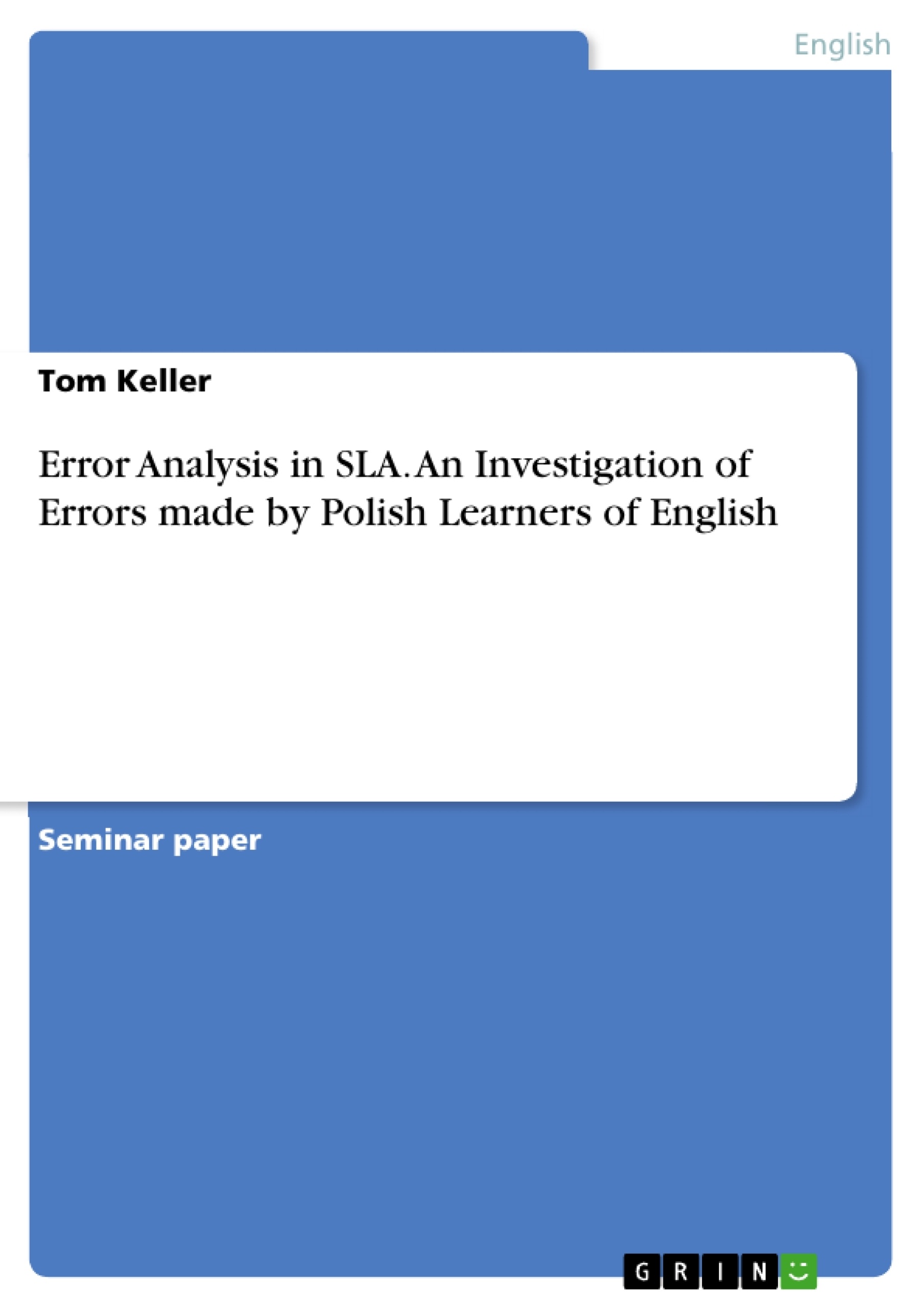In this paper I will investigate several language productions from Polish learners using the English language and try to uncover their errors. Using Error Analysis I will describe and explain the reasons for the error production. An interesting question will be whether the Polish speakers may have typical errors which could be related to their native language.
Due to the numerous kinds of errors, it will be necessary to classify them and to relate them to certain reasons. Furthermore there exists a difference between an error and a mistake. Its importance will be discussed later on.
Even though Error Analysis, initially offers helpful opportunities to investigate error production in a structured way, it has several disadvantages which were criticized in past decades.
In the end the conclusion will give an overview of the contents and summary the handled topics.
During the last several decades linguists have investigated the way of acquiring a second language. Learners have several ways of acquiring a language and the field of second language acquisition (SLA) tries to uncover and improve them.
When people try to learn a foreign language they produce a considerable amount of errors. These errors have always been made in the learning process and will never cease to occur. During the complex investigations of second language acquisition, linguists have focused on Error Analysis (EA) with its aim to take a deeper look on learner production. Around the late 60`s this particular analysis was established with an approach of Pit Corder. This system shows that errors should be investigated to understand and also improve the linguists attempts of learning a second language. Typical questions which arise are why learners make errors and what reasons do they have?
Before Pit Corder, linguists used the Contrastive Analysis (CA) which examines certain errors and refers to a particular connection between the first and the second language. The differences between these two types of analysis will be examined in detail in the following chapter.
Several steps are needed to analyze various errors in language. Investigators have developed procedures to collect, identify, describe, explain and lastly evaluate certain errors. These certain steps will be described and underlined with certain examples.
Inhaltsverzeichnis (Table of Contents)
- Introduction
- Error Analysis and Contrastive Analysis
- Errors
- Steps in EA Research
- Collection of Samples
- Identification of Errors
- Description of Errors
- Explanation of Errors
- Critics of Error Analysis
- Conclusion
Zielsetzung und Themenschwerpunkte (Objectives and Key Themes)
This work aims to provide a comprehensive overview of Error Analysis (EA) in second language acquisition (SLA). It examines the historical development of EA, contrasting it with Contrastive Analysis (CA), and explores the different steps involved in conducting EA research. The study uses examples of Polish learners' English production to illustrate key concepts.
- The development and significance of Error Analysis in second language acquisition.
- The differences between Error Analysis and Contrastive Analysis.
- The various steps involved in conducting Error Analysis research.
- The classification and explanation of errors made by second language learners.
- The role of native language influence on second language acquisition.
Zusammenfassung der Kapitel (Chapter Summaries)
- Introduction: The chapter introduces the topic of second language acquisition and the importance of Error Analysis in understanding learner production. It highlights the historical shift from Contrastive Analysis to Error Analysis and sets the stage for exploring the different aspects of EA research.
- Error Analysis and Contrastive Analysis: This chapter delves into the historical development of Error Analysis, contrasting it with Contrastive Analysis. It highlights the limitations of CA and emphasizes the significance of EA in understanding learner errors as valuable data points for language acquisition.
- Errors: This chapter discusses different types of errors in language learning, including comprehension errors and production errors. It differentiates between errors and mistakes, explaining that errors are systematic and often linked to a learner's interlanguage, while mistakes are unintentional slips.
- Steps in EA Research: This chapter outlines the four key steps involved in conducting Error Analysis research: collection of samples, identification of errors, description of errors, and explanation of errors. It provides an overview of the different types of samples and emphasizes the importance of considering factors like learner background and native language influence.
Schlüsselwörter (Keywords)
The primary focus of this work revolves around second language acquisition, Error Analysis, Contrastive Analysis, interlanguage, learner errors, and the influence of native language on second language learning. It further explores the different steps involved in conducting Error Analysis research and the classification and explanation of various types of errors made by second language learners.
- Citation du texte
- Tom Keller (Auteur), 2010, Error Analysis in SLA. An Investigation of Errors made by Polish Learners of English, Munich, GRIN Verlag, https://www.grin.com/document/319481



